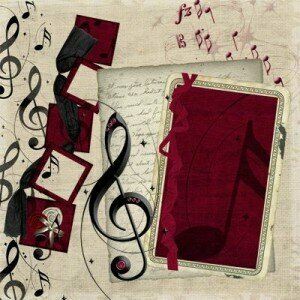 When I was preparing for my performance Diplomas – and indeed whenever I start working on new music – I put together a ‘scrapbook’ of music and other materials (articles, interviews, pictures etc), in effect for reference to help with my study. “Listening around” your repertoire is incredibly helpful, not just listening to other works by the same composer, but also other related works or composers, or different versions for other instruments, voice, etc. It can inform and shape your playing, enabling you to approach your music in new and different ways, to understand the music you are studying in more detail, and to achieve greater means of expression, quality of sound, rhythmic vitality, dynamic contrast and much more.
When I was preparing for my performance Diplomas – and indeed whenever I start working on new music – I put together a ‘scrapbook’ of music and other materials (articles, interviews, pictures etc), in effect for reference to help with my study. “Listening around” your repertoire is incredibly helpful, not just listening to other works by the same composer, but also other related works or composers, or different versions for other instruments, voice, etc. It can inform and shape your playing, enabling you to approach your music in new and different ways, to understand the music you are studying in more detail, and to achieve greater means of expression, quality of sound, rhythmic vitality, dynamic contrast and much more.
Our musical expression is fuelled by our imagination, and we should be open to whatever cues – aural, visual, intellectual – which pique the musical imagination.
Here is a sample of the ‘scrapbook’ I created to assist in my Diploma repertoire, and what I gained from it:
J S Bach – Concerto in D minor after Marcello BWV974
As this is Bach’s transcription for harpsichord of a concerto for oboe with orchestra by Alessandro Marcello, listening to Marcello’s original was essential. What I learned from it:
• String articulation
• Differentiating between solo (oboe) and tutti (whole orchestra) sections
• Texture
I also listened to both harpsichord and piano versions of the Concerto, and a rather interesting improvisation based on the slow movement by Gabriela Montero. All useful food for thought.
Bach: Concerto in D minor after Marcello, 1st movt (Glenn Gould)
Keyboard Concerto in D Minor, BWV 974 (after A. Marcello’s Oboe Concerto): II. Adagio (arr. G. Montero)
Franz Liszt – Sonetto 104 del Petrarca
Liszt’s three ‘Petrarch Sonnets’ were originally conceived as songs for high tenor voice. He later recast them as works for solo piano, while retaining many of the “sung” features of the originals, in particular, the beautiful melodic lines. I listened to the song version of the Sonetto 104 and also studied the text of Petrarch’s sonnet. What I learned:
• Shaping and character of the melody/’song’ lines
• Managing the climactic episodes and cadenzas to create emotional impact
• Greater understanding of the ‘story’ expressed in the music (based on Petrarch’s text)
Liszt: Petrarch Sonnet No. 104 Pace non trovo (1st version)
Mozart – Rondo in A minor K511
To me, this piece encapsulates so many aspects of Mozart’s music in microcosm: beautiful arias, grand operatic gestures, string quartet articulation, and nods back to the Baroque. I listened to excerpts from The Magic Flute, and from the Piano Sonata K310 (which shares the melancholy mood of the K511), and Piano Concerto No. 23 in A (slow movt).
Mozart: Rondo in A K511 (Uchida)
Rachmaninov – 2 Etudes-Tableaux, Op 33
The wonderful thing about Rachmaninov is that it is possible to hear actual recordings of him playing his own music, which is incredibly interesting and informative. There are clips on YouTube and whole albums on Spotify.
Rachmaninov was very specific in his writing for the piano (as a pianist himself, he wrote beautifully for the instrument, showing his deep understanding of the piano and the pianist’s hands), and if you take the time to listen to him playing his own pieces, the markings in his music, phrasing and dynamics, make perfect sense. His sense of the musical line was incredible too.
Rachmaninov: Etude Tableau in E flat, Op 33
Part of my teaching, when students first select repertoire, whether for exams or simply to play for pleasure, is to flag up “further listening” to help them understand the context of their music and to encourage them to engage with other related music. This is helpful for even the most junior students. Of course, it can be more useful for a student to put together their own ‘scrapbook’ of sound and video clips, and other references to help in their musical study. It’s very easy to do: platforms such as YouTube and Spotify and the like allow one to create playlists and collections which can be referred to time and time again.




Beautifull